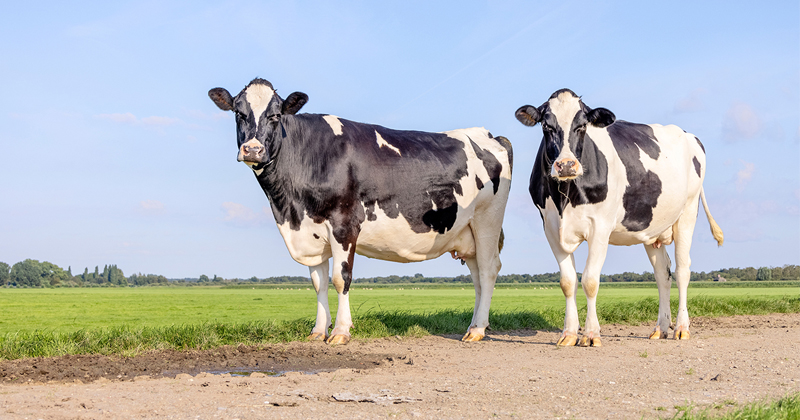


Cleaner milk, better profits
Photo by Shutterstock March 22, 2024
UD study offers insights into global agriculture
If you look at agriculture just in the United States, you might assume the industry has shifted almost completely to large-scale farms. But globally that’s not the case, and a University of Delaware researcher has been studying developing countries where small farms proliferate.
Research findings in one of these countries shines a light on ways to improve the quality of agriculture products among small farmers like these.
The researcher: Manaswini Rao, assistant professor of economics at UD’s Alfred Lerner College of Business and Economics.
The paper: “Got (clean) milk? Organization, incentives, and management in Indian dairy cooperatives,” published in August 2023 in the Journal of Economic Behavior and Organization in collaboration with Ashish Shenoy of UC Davis.
What she wanted to know: How effective are group-level economic incentives at promoting change in agriculture cooperatives?
The big picture: Believe it or not, tiny farms still dominate
In the United States, combine harvesters efficiently pull crops from fields of thousands of acres, land that once made up a patchwork of small family farms. Small dairy farmers with herds of a dozen or so cows have been replaced with operations with thousands of livestock, sometimes using robotic milking machines. According to the United States Department of Agriculture, the majority of dairy cows in the United States now live on farms of 1,000 livestock or more, and some massive operations have as many as 25,000 cows.
Small farmers are far from gone, however — they just mostly live in other countries. The paper notes there are 400 million farms in the world of only 2.5 acres or less, and almost all of them have 10 or fewer workers.
“Small family farms in the U.S. would actually be a large corporate setup here in India or many other developing countries,” Rao said, with many such farmers owning only one or two cows.
You may not think of India as a center for dairy production, but it’s actually the world’s largest milk producer, accounting for 22% of global production and outpacing the United States, according to the Food and Agriculture Organization of the United Nations. (India also boasts more milk variety than the U.S. — a large share of its output comes from water buffalo. Good luck finding that on the shelf in your local grocery store.)
India does have a few large dairy operations, but most are small, the USDA notes, with about 80 million households earning their living from milk sales. India, a nation where many have a vegetarian diet, has quite the appetite for milk, as most of this production stays in the country (it does export some higher-value products made from milk, like butter).
Making a positive difference in farmers’ lives
With 60% of India’s population reliant on agriculture, Rao said, “You have to think about improving agricultural productivity.”
That’s where her research comes in. Rao, an economist who focuses on developing countries, wanted to explore whether economic incentives could encourage production of cleaner milk, which can in turn be used in higher-value products and make more money for farmers.
Cooperatives are important for farmers in India. Part of the reason they can have such an economic impact is their embrace of cooperatives that band together to collect, market and sell the milk.
“The key to … the agriculture and dairy industry is group production,” Rao said.
But, if you offer economic incentives to a cooperative, it’s not clear what the effect will be. The members may or may not have any motivation to change their practices — after all, the researchers reasoned, individual farmers might not have an incentive to do the work needed, since the milk goes into a large batch with everyone else’s.
To find out, Rao and Shenoy worked with cooperatives in the Indian state of Karnataka, where they say more than 2.4 million dairy farmers are spread out over 22,000 villages. In this extensive undertaking, they got important help through partnerships with local colleges.
The results of this modest payment incentive were clear, as farmers produced almost twice as much milk clean enough for use in higher-value products.
“Incentives seem to work, and the increase in the quality was really, really high,” Rao said.
Interestingly, they also discovered that mandating transparency in distribution of the money resulted in some of the cooperatives turning down the payments altogether. This happened most often in cooperatives where the managers had less power – for example, a lower social status or fewer resources at their disposal.
It could be that the payments weren’t worth it for these managers, for the work it would take to bring everyone on board, or simply that they weren’t interested in the money if they didn’t have the option or social influence to keep it for themselves.
The article noted that those trying to promote change with economic incentives in some cultures may actually hurt their cause by insisting on transparency. Rao said more study is needed to understand the motives behind this reluctance.
Who can learn from the research?
The results of this study could be of interest beyond just dairies in India.
Rao said the results speak to improving quality in cooperatives in general, which feature prominently in the global supply chain of products like coffee grown in sub-Saharan Africa.
Contact Us
Have a UDaily story idea?
Contact us at ocm@udel.edu
Members of the press
Contact us at 302-831-NEWS or visit the Media Relations website

